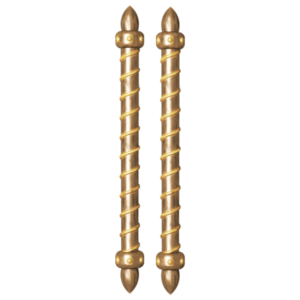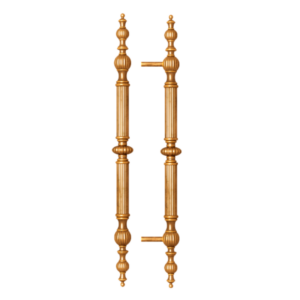Description
Meaning of Tiger Head-Shaped Gate Handle in Vietnamese Culture
In Vietnamese culture, the tiger is a powerful symbol associated with strength, courage, and protection. Here’s how it relates to the tiger head-shaped gate handle:
Guardian Symbol: The tiger is often seen as a protective figure, warding off evil spirits and misfortune. A tiger head on a gate handle signifies a protective presence at the entrance of a home or building.
Status and Power: Traditionally, the tiger symbolizes power and authority. Incorporating a tiger motif into architectural elements like gate handles reflects status and can indicate the owner’s strength and influence.
Cultural Heritage: The tiger is one of the 12 animals in the Vietnamese zodiac, representing those born in the Year of the Tiger. Thus, it carries personal significance for individuals born under this sign.
Prominent Features of Cast Aluminum Sand Painting
Durability: Cast aluminum is resistant to corrosion and wear, ensuring that the gate handle remains functional and visually appealing over time.
Intricate Design: The sand casting process allows for detailed and expressive designs, capturing the fierce features of the tiger head effectively.
Textural Variety: The surface finish can vary, providing a rich texture that enhances the aesthetic appeal of the handle.
Artistic Expression: The combination of artistic design and functional utility makes these handles not just practical items but also decorative art pieces.
Position
Front Gates and Entrances: Tiger head-shaped handles are typically placed on the main gates or doors of homes, emphasizing protection and strength at the entrance.
Cultural or Public Buildings: They can also be used on gates of cultural sites or public buildings, showcasing traditional motifs and enhancing the overall architectural design.
The cast aluminum tiger head-shaped gate handle serves as a significant cultural symbol in Vietnam, representing strength and protection. Its prominent features blend functionality with artistic expression, making it a valuable element for both residential and cultural architecture.










